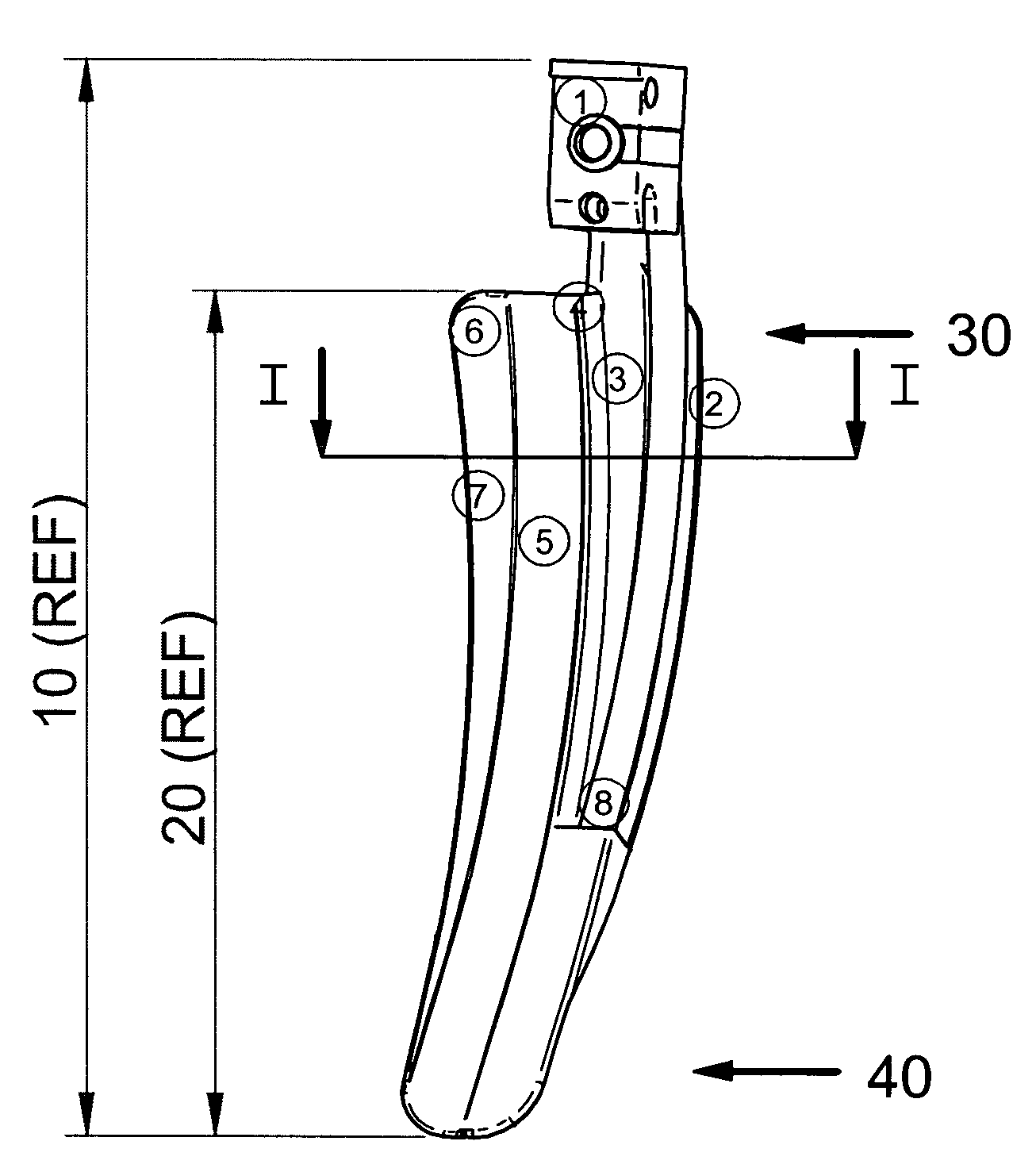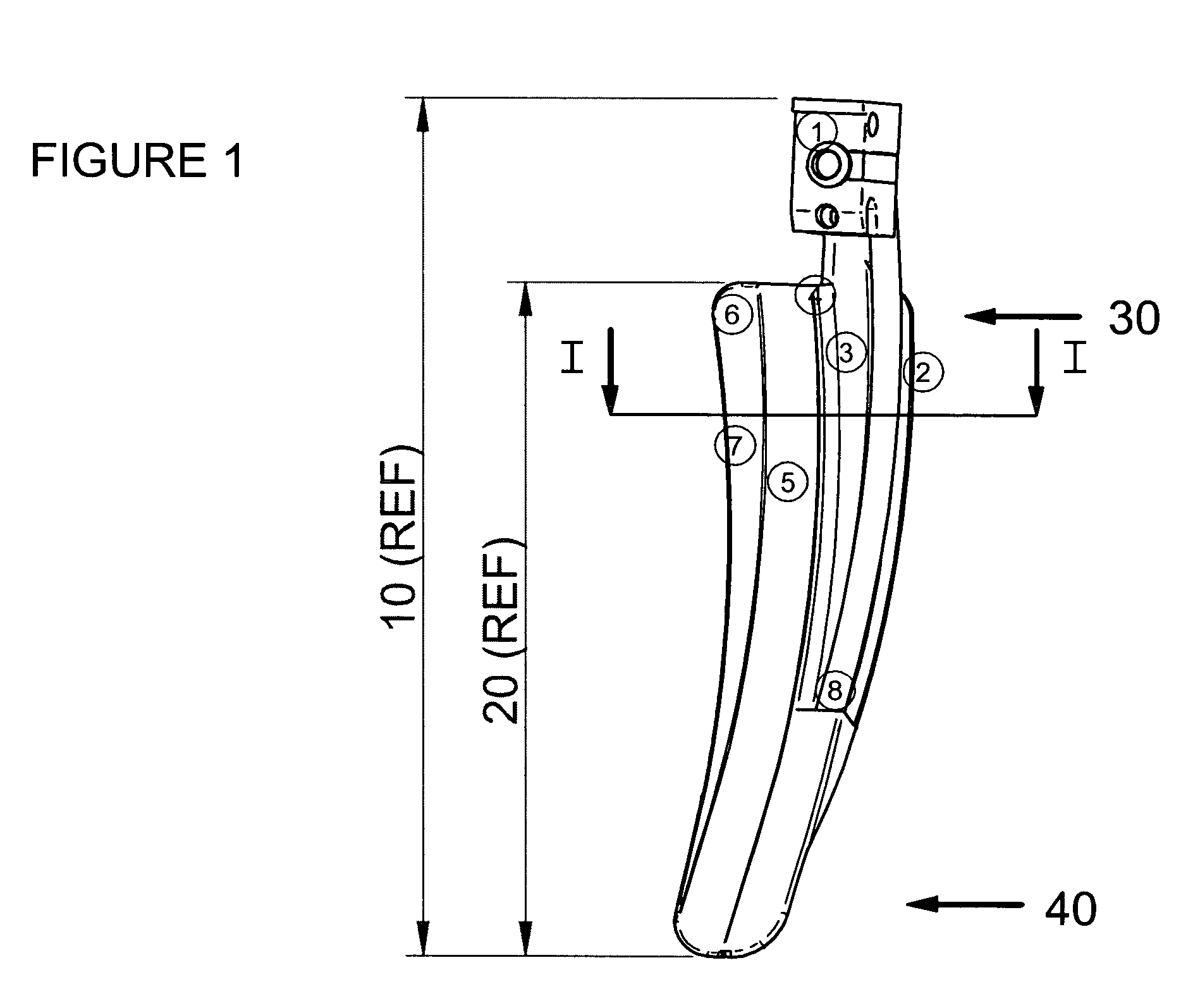Laryngoscope blade
a technology of laryngoscope and blade, which is applied in the field of laryngoscope blade, can solve the problems of affecting the endotracheal tube, affecting the further intubation of patients, and the device is extremely large, so as to improve the examination of intubated patients and simplify the examination process
- Summary
- Abstract
- Description
- Claims
- Application Information
AI Technical Summary
Benefits of technology
Problems solved by technology
Method used
Image
Examples
Embodiment Construction
[0048] A specific example of a laryngoscope blade is shown in the accompanying Figures. As can be seen from FIG. 1, the laryngoscope blade 10 comprises a body 1 which is adapted for attachment to standard laryngoscope handles (not shown). When attached, the laryngoscope handles extend in FIG. 1 towards the viewer. Where the laryngoscope blade 10 requires a power source, for example for powering lighting means then that power may be supplied via the handle.
[0049] The blade 10 comprises an elongate arm 20 extending in a longitudinal direction, elongate arm 20 having a proximal end 30 adjacent body 1 and a distal end 40. Elongate arm 20 comprises a longitudinally elongate portion 5 (also referred to as a “furrow”) having a generally arcuate cross-section defining a convex upper surface (not shown in FIG. 1), a concave lower surface and first and second edges.
[0050] A first flange 6,7 is connected to the first edge of the arcuate cross-section 5 and defines a lateral edge of the arm. ...
PUM
 Login to View More
Login to View More Abstract
Description
Claims
Application Information
 Login to View More
Login to View More - R&D
- Intellectual Property
- Life Sciences
- Materials
- Tech Scout
- Unparalleled Data Quality
- Higher Quality Content
- 60% Fewer Hallucinations
Browse by: Latest US Patents, China's latest patents, Technical Efficacy Thesaurus, Application Domain, Technology Topic, Popular Technical Reports.
© 2025 PatSnap. All rights reserved.Legal|Privacy policy|Modern Slavery Act Transparency Statement|Sitemap|About US| Contact US: help@patsnap.com



